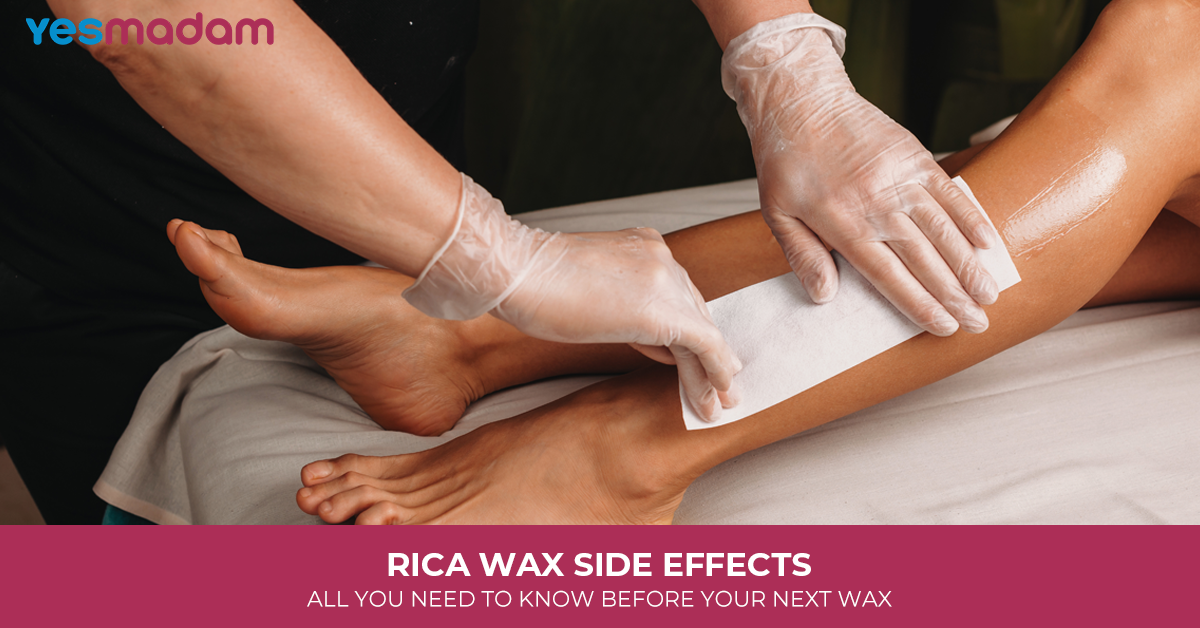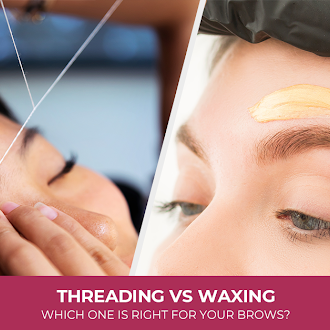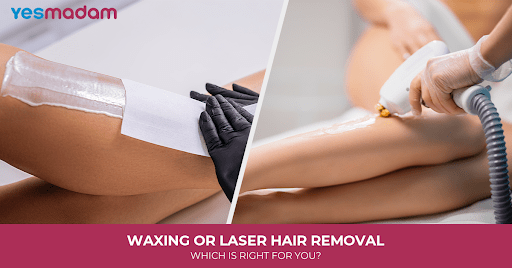
Rica Wax Side Effects: All You Need to Know Before Your Next Wax
Rica wax, also called ‘luxury wax’, is quite popular due to its gentle, skin-friendly formulation. It is free from chemicals and thus is the best option for those with sensitive skin.
Although it is a non-sticky wax formula, known for its remarkable natural ingredients and the method used. Rica wax is much more expensive than other waxes and also has certain side effects ( burns or brushing, redness, etc ) and often lacks versatility in terms of hair types and body areas coverage.
Read this guide on Rica wax side effects to be better informed about the risks as well as preventive tips to ensure a smooth, flawless rica wax hair removal experience.
Table of Contents
What is Rica Wax?
Rica wax (referred to as liposoluble wax) is a premium hair removal method that originated in Italy. What sets it apart from conventional wax formulas is its natural, skin-friendly ingredients and a gentle application approach. It is a great choice for sensitive skin as it does not include harmful chemical additives like parabens and artificial fragrances.
It is enriched with ingredients known for their nourishing, moisturizing, and calming benefits, such as beeswax, vegetable oils (olive oil or argan oil), and titanium dioxide. These ingredients help to take care of your skin even as the wax eliminates hair.
Does Rica Wax Have Side Effects?

Rica wax is generally considered a gentler alternative to traditional waxing methods, but it can still have some side effects.
Here are some potential side effects of using Rica wax:
- Redness and irritation: This is a common side effect of any type of waxing. The degree of redness can depend on factors like hair growth density or the time passed since the last waxing session. This usually subsides within a few hours.
- Allergic reactions: Although Rica wax is formulated with natural ingredients, some individuals might be allergic to components like beeswax or essential oils used as adhesives. Allergic reactions can manifest as redness, swelling, or itching. It is crucial to perform a patch test before a full application, especially if you have sensitive skin or known allergies.
- Skin sensitivity: Some individuals, especially those with sensitive skin, might experience heightened skin sensitivity after waxing, manifesting as tingling or a burning sensation, particularly in sensitive areas like the bikini line or underarms.
- Ingrown hairs: While Rica wax may help reduce the chance of ingrown hairs compared to shaving, they can still occur if hair follicles get trapped under the skin instead of growing outward. Proper exfoliation after waxing is important to minimize this risk.
- Bruising or burns: Improper waxing technique or applying wax that is too hot can lead to bruising or burns on the skin.
- Hyperpigmentation: Rica wax can sometimes lead to skin irritation or hyperpigmentation.
A Step-by-Step Guide to Prevent the Side Effects of Rica Wax

Follow these best preventive steps to minimize the Rica wax side effects that will also help keep your skin smooth and healthy in the long run:
- Gently exfoliate: After 1-2 days of waxing, exfoliate your skin using an exfoliating mitt. It exfoliates dead skin cells and stops ingrown hairs.
- Hydrate skin: To calm and hydrate the waxed area, this step involves moisturizing your skin using a lotion or oil. This effectively helps minimise redness and irritation.
- Refrain from Hot showers: Do not take hot showers, saunas, or steam for the next day, as the heat may trigger irritation on rica waxed skin.
- Choose loose clothing: Do not wear tight clothes after waxing to prevent irritation and friction.
- Apply a cold compress: If you see signs of inflammation after Rica waxing, apply a cold compress for 10-15 minutes to provide a soothing effect on the affected area.
- Avoid sun exposure: Avoid direct sun exposure for the next 1-2 days after Rica wax. Apply sunscreen with SPF 30 or higher if you need to step out in the sun.
- Do not touch or scratch: Stay away from touching, scratching, or rubbing the Rica waxed area as it may cause irritation or breakouts through bacterial transfer.
- Apply aloe vera gel: Aloe vera gel can help soothe and calm the skin, thereby minimizing redness and irritation and promoting healing.
Top 5 Myths and Facts On Rica Wax Benefits Debunked
Dispelling the myths and facts on rica wax benefits is yet another attempt to explore Rica wax side effects or limitations further:
Myth 1: Rica wax is always fully pain-free
Fact: while less painful than traditional wax, rica wax may trigger discomfort, more so, on dense hair or the bikini area.
Myth 2: Rica wax is mess-free
Fact: While Rica wax leaves behind less sticky residue, an inexperienced application can still lead to a mess, especially if applied too thickly.
Myth 3: Rica wax is widely available and cost-effective
Fact: Although Rica wax causes less pain, you need to check your budget before booking an appointment for rica wax, as it is much more expensive than other waxes and lacks accessibility to a broader range of people.
Myth 4: Rica wax is suitable for different hair types and areas
Fact: The creamy texture and lower temperature make Rica wax specifically ideal for sensitive areas like the face, underarms, or the bikini lines with thin hair growth. Normal wax is more versatile, and it effectively covers various body parts like the bikini line or larger areas such as arms or legs with thicker hair.
Myth 5: Many people are familiar with the Rica wax process
Fact: Despite the growing demand for rica wax, many people still prefer normal wax as a predictable option over rica wax, due to familiarity with the application and feel of traditional wax.
Additional Aftercare Tips for Rica Waxing to Address Risks
- Immediately cleanse skin after rica waxing with a gentle foam cleanser to get rid of any bacteria transferred through the process.
- Try to keep your skin hydrated with the help of gentle, fragrance-free moisturizers.
- To treat burns, apply an even layer of Vaseline or Aquaphor for a couple of days.
- Products with hydroquinone or ingredients like niacinamide and mandelic acid may help fade hyperpigmentation, a common side effect associated with Rica wax.
Conclusion
While Rica waxing is an effective hair removal method, it does come with its potential side effects like skin irritation, burns, and other infection risks. You can address these Rica wax side effects with preventive measures and other post-wax care tips. Ultimately, irrespective of the side effects, the right wax choice depends on factors such as your pain tolerance level, skin type, and hair texture.
FAQs
What are the side effects of waxing with Rica wax?
Rica wax, while considered a good option for hair removal, can still cause side effects like redness, irritation, and inflammation, especially in sensitive areas.
Which is better, Rica or normal wax?
Rica wax is usually regarded as better than normal wax, especially for sensitive skin, as it is formulated with natural ingredients and is less prone to irritation.
Does Rica waxing whiten skin?
Rica waxing may improve skin’s appearance by eliminating dead skin cells and reducing tan, which may cause a brighter, more even complexion.
How to treat burnt skin after waxing?
For treating a wax burn, immediately run the affected area under cool water for 20 minutes, and then apply a cold compress.
How to get rid of flaky skin after waxing?
To address flaky skin after waxing, prioritize soothing and hydrating the area. Immediately after waxing.
Does waxing lighten skin tone?
Yes, waxing can make skin appear lighter due to the removal of dead skin cells but it does not lighten skin in the sense of minimizing melanin production.
Does waxing loosen skin permanently?
No, waxing does not permanently loosen skin. Waxing may cause temporary stretching and pulling of the skin during the hair removal process.
Does waxing make skin darker?
Yes, waxing can potentially lead to skin darkening, also called hyperpigmentation, particularly in certain individuals and areas.
Does waxing make skin dark over time?
No, waxing does not directly darken skin; it may sometimes lead to temporary or longer-lasting discolouration, called post-inflammatory hyperigmentation, because of irritation from the waxing process.
Why does waxing darken skin?
Waxing can potentially make skin appear darker due to post-inflammatory hyperpigmentation, a condition where the skin gets darker in response to inflammation.



